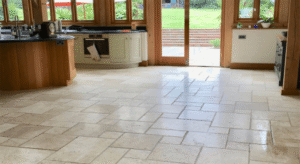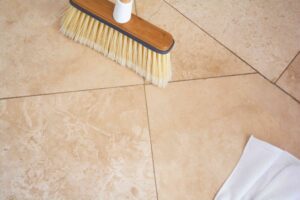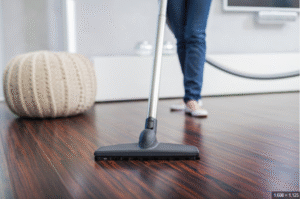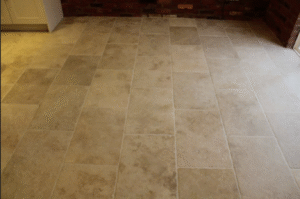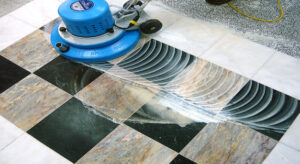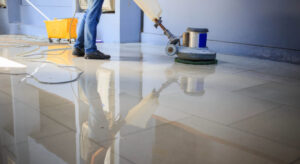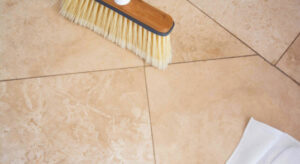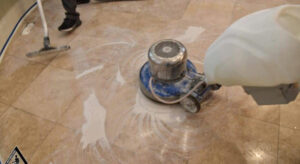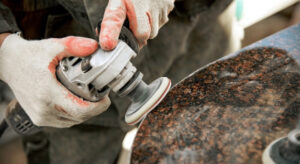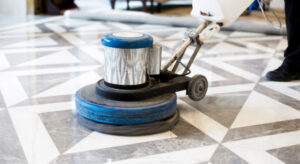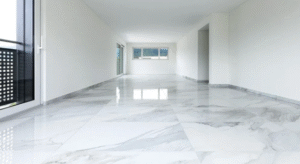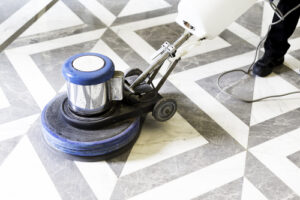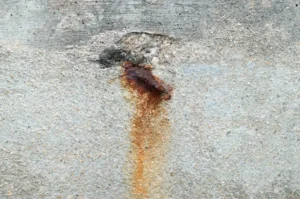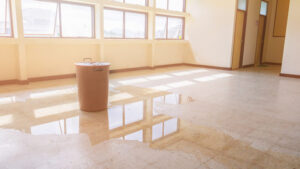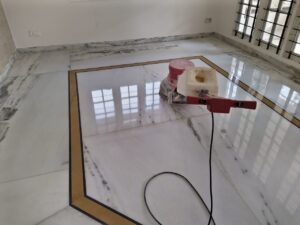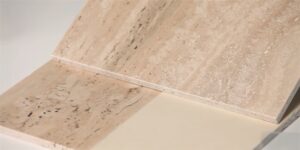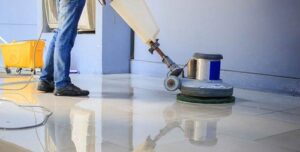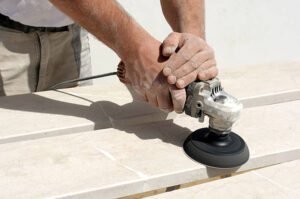1. Introduction
Marble has long been prized for its luxurious appearance, timeless beauty, and elegant finish. Found in everything from ancient sculptures to modern luxury homes, this natural stone offers both aesthetic appeal and a symbol of sophistication. But as stunning as marble may be, it is also known for its delicacy. It is prone to staining, scratching, and etching if not properly maintained. Whether you're a homeowner, a business operator, or a property manager, understanding how to care for marble surfaces is essential.
In this guide, we will explore essential tips to help you preserve the beauty and durability of your marble surfaces. The goal is to make your marble last longer, look better, and maintain its value over time. From day-to-day cleaning practices to deep restoration techniques, we will walk you through all aspects of marble maintenance. And most importantly, we’ll shed light on when and why a professional
marble floor cleaning service becomes indispensable. These services bring specialized knowledge, tools, and products that ensure your marble retains its original luster.
With marble being a considerable investment, protecting it should be a priority. As we go through each section, you’ll learn how to avoid common mistakes, adopt best practices, and make informed decisions regarding your cleaning and maintenance strategy. Whether your marble is on the floor, wall, or countertop, proper care will keep it as breathtaking as the day it was installed. Let’s dive into the world of marble care and maintenance, where beauty meets practicality.
2. Understanding Marble Surfaces
To properly care for marble, it’s essential to understand what makes this stone unique. Marble is a metamorphic rock formed from limestone under high pressure and temperature. Its primary component is calcium carbonate, which gives it the distinct softness and elegance that so many people find appealing. The veining and coloration result from impurities like iron, clay, or silt, which were present during its formation. This natural variation makes each marble slab unique, a feature highly prized in both residential and commercial design.
However, marble’s mineral composition also contributes to its vulnerabilities. It is softer and more porous than granite, quartzite, or engineered stone. As a result, it can easily absorb liquids and is susceptible to damage from acidic substances such as lemon juice, vinegar, and wine. Physical abrasions from sand, dirt, or hard cleaning tools can also lead to dullness or visible scratches.
There are several types of marble used in construction and design, including Carrara, Calacatta, Emperador, and Crema Marfil. Each has different properties in terms of hardness, veining, and coloration, which means maintenance requirements can vary. Understanding these differences is critical for choosing the right cleaning methods and products.
By recognizing marble’s characteristics, you are better prepared to make decisions about its care. While general maintenance like dusting and gentle cleaning is effective, deep cleaning or restoration often requires the expertise of a professional marble floor cleaning service. These services assess your marble type, condition, and needs to deliver tailored care that goes beyond DIY solutions. If you've invested in marble, ensuring its long-term beauty starts with understanding its nature and how best to protect it.
3. Common Types of Marble
Marble comes in a wide variety of types, each with its own unique beauty, texture, and level of durability. The type of marble used in your space not only influences its visual appeal but also dictates how it should be maintained. Here are some of the most common and popular types of marble you’ll encounter:
Carrara Marble: Perhaps the most well-known, Carrara marble originates from Italy and is usually white or blue-gray with soft veining. It's a favorite for bathrooms and countertops but is also used for flooring. It’s relatively soft and requires frequent care.
Calacatta Marble: Also from Italy, Calacatta is rarer than Carrara and features bold, dramatic veining with a stark white background. It’s luxurious and often found in high-end applications, but its cost and maintenance needs are higher.
Emperador Marble: This brown-toned marble with white or golden veins is sourced from Spain. It's denser than Carrara or Calacatta, making it more durable, especially for flooring.
Crema Marfil Marble: Another Spanish variety, this marble has a creamy beige color with soft veins. It’s commonly used in flooring, wall cladding, and bathroom vanities due to its warm aesthetic.
Each type of marble has different levels of porosity and resilience. For instance, lighter marbles like Calacatta are more prone to staining, while darker varieties like Emperador are more forgiving. Understanding the specific type of marble in your home or business helps determine the best care strategy. Regular maintenance by a trusted marble floor cleaning service can ensure that each marble type retains its unique charm while staying protected from daily wear and tear.
4. Daily Cleaning Tips for Marble Surfaces
Maintaining marble surfaces starts with a simple yet consistent daily cleaning routine. Since marble is porous and prone to staining and etching, even small spills or grime can damage it if left unattended. Begin your day-to-day maintenance by dusting or sweeping marble floors with a soft microfiber mop. Avoid using abrasive brooms or brushes as they can leave scratches.
For countertops and other surfaces, use a damp microfiber cloth to remove dust and surface grime. If needed, apply a pH-neutral cleaner specifically designed for natural stone. Harsh chemical-based cleaners, acidic solutions, or anything containing vinegar or lemon should be strictly avoided, as they can damage the marble’s protective sealant and dull its finish.
Always use a clean, dry cloth to wipe down the surface after cleaning to prevent water spots or residue buildup. Promptly clean up any spills—especially acidic substances like fruit juices, wine, or coffee—as these can cause etching or permanent discoloration.
In high-traffic areas like hallways and kitchens, place mats or rugs at entry points to catch dust and debris before it can reach the marble floor. For marble surfaces in bathrooms, consider using coasters, soap trays, and decorative containers to prevent toiletry products from staining the stone.
Consistent care reduces the need for intensive cleaning or resurfacing. If dirt or grime accumulates beyond regular cleaning efforts, it's wise to contact a professional marble floor cleaning service. These professionals use industry-grade tools and stone-safe products to rejuvenate your marble without causing harm. Keeping up with these daily habits will go a long way in preserving your marble’s natural beauty and shine.
5. Weekly and Monthly Marble Maintenance
In addition to daily cleaning, your marble surfaces will benefit from a more thorough cleaning schedule on a weekly or monthly basis. These deeper cleanings target areas where grime, dust, or oils may have accumulated beyond the reach of everyday wipe-downs. For instance, marble floors in busy households or commercial spaces often trap dust in corners and grout lines, which can dull the finish over time.
Start your weekly routine by using a damp mop with warm water and a pH-neutral stone cleaner. Avoid steam mops or excess moisture, as they can damage both the marble and its subfloor. For countertops or walls, a gentle wipe with stone-safe soap and water will help eliminate fingerprints, water spots, and residual dirt.
Check for any signs of wear on your marble’s sealant. If you notice that water no longer beads up on the surface or that stains are appearing more easily, it might be time to reapply the sealant. While this is often a semi-annual or annual task, assessing your marble monthly can help you plan ahead.
Additionally, clean any rugs or mats placed on marble surfaces, as they can trap dirt that eventually scratches the stone. Check under appliances or fixtures to ensure no moisture is being trapped.
When you notice dulled areas or stubborn grime, it may be best to consult a marble floor cleaning service. Their professional-grade cleaning solutions, equipment, and trained techniques go far beyond what store-bought products offer. They can also buff and polish surfaces to restore a glossy finish.
Setting a regular weekly or monthly maintenance routine not only keeps your marble looking beautiful but also prolongs its life and minimizes the need for costly restoration in the future.
6. Importance of Sealing Marble
Sealing is one of the most crucial components of marble maintenance. Since marble is naturally porous, it can easily absorb liquids and oils, leading to stains and long-term damage. A quality sealant acts as a protective barrier, making the surface more resistant to spills, dirt, and etching caused by acidic substances.
There are two main types of marble sealants: penetrating sealers and surface sealers. Penetrating sealers absorb into the marble to create an internal barrier, ideal for high-use areas. Surface sealers create a thin, protective layer on top of the stone. While they offer better immediate protection, they may alter the appearance slightly and wear off more quickly.
To check if your marble needs sealing, perform a water drop test: sprinkle a few drops of water on the surface and wait for 15 minutes. If the water is absorbed rather than beading on the surface, it's time to reseal. Most experts recommend sealing marble every 6 to 12 months, but this varies depending on usage and marble type.
Sealing should be done after a thorough cleaning to ensure no dirt is trapped under the protective layer. Clean the surface with a pH-neutral stone cleaner, allow it to dry fully, then apply the sealant as directed.
Improper sealing can lead to uneven coloration or ineffective protection. If you’re unsure, hiring a professional marble floor cleaning service can ensure proper application. These services are equipped to select and apply the best sealant for your specific type of marble, giving you long-lasting peace of mind.
Regular sealing enhances the longevity of your marble and reduces the frequency of deep cleaning and polishing. It's a small investment of time and resources that yields significant returns in beauty and durability.
7. Stain Removal Techniques
Stains on marble surfaces can be troublesome, especially if they are not addressed promptly. The key to successful stain removal lies in identifying the type of stain and using the appropriate method. Marble is sensitive, so always opt for gentle, stone-safe cleaning solutions.
Organic stains from food, coffee, tea, or wine typically leave a brown or pinkish mark. For these, create a poultice using baking soda and water or a commercial poultice powder mixed with hydrogen peroxide. Apply the paste over the stain, cover with plastic wrap, and let it sit for 24 to 48 hours. The poultice will draw the stain out of the marble.
Oil-based stains from grease, cosmetics, or cooking oils leave dark spots. These require a degreasing agent like acetone or ammonia mixed with a poultice. Again, allow the mixture to sit for at least a day to fully absorb the stain.
Rust stains, often caused by metal objects left on the surface, are particularly stubborn. Specialized rust removers formulated for stone are your best bet—avoid using generic rust cleaners as they may contain acids harmful to marble.
For ink stains on light-colored marble, hydrogen peroxide can be effective. On darker marble, acetone works better. Biological stains from mildew or mold should be cleaned with a diluted solution of bleach and water—again, used with caution.
Always test any cleaning agent in an inconspicuous area first. Avoid scrubbing with hard brushes or abrasive pads. If stains persist despite your best efforts, a marble floor cleaning service should be contacted. These professionals have industrial-grade equipment and expertise to lift stains without compromising the integrity of the stone.
By learning and applying the right stain removal techniques, you can keep your marble surfaces pristine and free from unsightly blemishes.
8. Dealing with Scratches and Etches
Scratches and etches are among the most common problems affecting marble surfaces. While scratches are typically caused by dragging furniture, abrasive particles, or improper cleaning tools, etches occur due to acidic substances reacting with the calcium carbonate in marble, leaving dull or whitish marks.
The best way to deal with scratches is through prevention. Place felt pads under furniture legs, avoid wearing shoes on marble floors, and sweep regularly to remove grit. If light scratches do occur, they can often be buffed out using a marble polishing powder and a soft cloth. Deeper scratches may require a professional’s touch.
Etching is trickier. Since it is a chemical reaction that affects the finish, not just the surface, cleaning alone won’t restore the shine. Mild etches may be treated with polishing powder specifically formulated for marble. Apply with a damp cloth using gentle, circular motions until the shine is restored.
For deeper etching or widespread damage, the surface may need to be honed and repolished. This involves sanding the affected area and gradually restoring its original finish through polishing—a task best left to a skilled marble floor cleaning service.
Using coasters, trays, and placemats can help prevent etching on countertops. In kitchens and bathrooms, always wipe away acidic spills like vinegar, citrus, or cleaning products immediately. Installing area rugs in high-traffic zones can also reduce the risk of scratching.
If you notice consistent etching in certain areas, it may be due to improper sealant or high acidity exposure. Resealing and reinforcing those areas can offer long-term protection.
While it’s nearly impossible to prevent all wear, taking preventive measures and addressing scratches and etches early will help preserve your marble’s elegance and reduce the need for major restorations.
9. When to Call a Professional Marble Floor Cleaning Service
While daily and weekly maintenance can keep your marble in good shape, certain situations call for the expertise of a professional marble floor cleaning service. Knowing when to bring in professionals can prevent minor issues from becoming costly repairs.
If your marble surfaces have deep scratches, extensive etching, or are dull despite regular polishing, it’s time to seek expert help. Professionals have the right tools, such as diamond abrasives and polishing pads, to restore the finish safely and efficiently.
Another reason to hire a professional is for deep cleaning and stain removal. Tough stains—especially oil-based or rust—can be challenging to remove without damaging the stone. Marble cleaning specialists use high-grade, pH-balanced cleaning agents and poultices that are not commonly available to consumers.
Professionals can also assess the condition of your sealant and apply a new one if needed. This step is crucial in preserving your marble’s resistance to staining and moisture. Improper sealing can lead to discoloration or patchy finishes, which are hard to fix without professional restoration.
In addition to cleaning, many services offer polishing and honing to bring back the natural luster of your marble. These treatments require precision and knowledge of marble varieties—qualities a DIY job often lacks.
Commercial properties or homes with large marble installations benefit most from scheduled professional maintenance. It ensures that marble floors and surfaces retain their luxurious look year-round without the homeowner needing to invest in expensive equipment or risk causing damage.
Ultimately, calling in a marble floor cleaning service at the right time extends the life of your stone, enhances its appearance, and saves you time and money in the long run.
10. Avoiding Common Marble Cleaning Mistakes
Caring for marble may seem simple, but many homeowners unknowingly make mistakes that lead to permanent damage. Understanding what not to do is just as important as knowing the best care practices.
One of the most common mistakes is using the wrong cleaning products. Many all-purpose or bathroom cleaners contain acids, bleach, or ammonia—chemicals that can etch or dull marble surfaces. Vinegar, lemon juice, and other natural cleaners may be great elsewhere but are harmful to marble.
Another issue is using abrasive tools like scrub brushes, steel wool, or rough sponges. These can scratch the surface, especially on polished marble. Always opt for soft microfiber cloths, mops, and non-abrasive applicators.
Over-wetting the surface during cleaning is also problematic. Marble is porous, so excess water can seep into the stone, causing stains, mold, or weakening of the structure. Use only a lightly damp cloth or mop, and ensure the surface is dried immediately after.
Skipping the sealing step or failing to reseal regularly can lead to staining and etching over time. A good rule of thumb is to reseal high-traffic areas every 6 to 12 months, even if the marble appears clean.
Ignoring spills—especially acidic or oily ones—is another big mistake. Even a few minutes of contact with lemon juice, coffee, or wine can leave lasting etches. Prompt cleanup is essential.
Lastly, attempting DIY polishing or restoration without proper knowledge can lead to uneven finishes or worse damage. It's best to consult a marble floor cleaning service for major tasks.
Avoiding these mistakes helps maintain your marble’s beauty and durability. An informed approach to care not only enhances its lifespan but also ensures your investment retains its value and elegance.
11. Best Cleaning Products for Marble
Choosing the right cleaning products is critical for preserving the look and integrity of marble surfaces. The wrong product can cause irreversible damage, while the right one ensures cleanliness without harming the stone. Always prioritize pH-neutral cleaners that are specifically labeled safe for natural stone or marble.
One of the most recommended options is a mild dish soap diluted in warm water. This simple solution is gentle yet effective for regular cleaning. However, it should be used sparingly and wiped off thoroughly to prevent buildup.
Commercial stone cleaners like StoneTech, Black Diamond Marble & Tile Cleaner, or Granite Gold Daily Cleaner are excellent choices. These are specially formulated to clean marble without stripping away the sealant or dulling the surface.
Avoid products containing vinegar, lemon juice, bleach, or ammonia. Even “natural” or “green” cleaners can be harmful if they are acidic. These substances react with the calcium carbonate in marble, leading to etching and discoloration.
Microfiber cloths and soft mops should accompany your cleaning products. Avoid abrasive scrubbers that can scratch polished surfaces. For tougher stains, use poultices or gels designed for marble rather than DIY mixtures that might contain harmful ingredients.
For disinfecting purposes, isopropyl alcohol diluted with water in a 1:1 ratio can be used sparingly and wiped off immediately. This provides sanitation without damaging the surface when used correctly.
In summary, choose cleaners that are pH-neutral, non-acidic, and designed specifically for marble. Consult a marble floor cleaning service for product recommendations suited to your marble type and finish.
Maintaining an arsenal of the right products ensures your marble stays clean, lustrous, and undamaged.
12. How to Polish Marble Surfaces
Polishing marble surfaces not only enhances their shine but also prolongs their life. This process involves smoothing out minor scratches and restoring a high-gloss finish. While routine polishing can be done at home, deeper restoration is best left to a professional marble floor cleaning service.
To polish marble at home, begin by cleaning the surface with a pH-neutral cleaner to remove all dirt and debris. Allow the surface to dry completely. Choose a marble polishing powder or paste that matches your stone type and finish. These are widely available in hardware stores or online.
Using a soft cloth or a buffing pad, apply the polishing product in circular motions. Work in small sections and be gentle—excessive pressure can cause uneven finishes or streaking. After application, let the polish sit for a few minutes before buffing it off with a clean, dry cloth.
For floors, you may consider using a variable-speed buffer with a polishing pad. Ensure you are comfortable handling the equipment, and always test in an inconspicuous area first. Floor polishers should be used with proper safety gear and following the manufacturer’s instructions.
After polishing, always reseal the marble if the sealant appears worn or if you’ve used any abrasive products. Polishing and sealing work together to protect the stone from moisture and staining.
Avoid polishing too often, as overdoing it can wear down the marble. Once every few months is usually sufficient for high-use areas, while less trafficked surfaces may only need it twice a year.
When in doubt or for restoring heavily dulled or etched marble, contact a professional marble floor cleaning service. They have access to industrial-grade equipment and materials that ensure even, high-quality results.
13. Seasonal Marble Maintenance Tips
Each season brings unique challenges for marble care. Adapting your maintenance routine throughout the year helps preserve your marble's beauty and extend its lifespan.
Spring: This is an ideal time for deep cleaning. Winter residue like road salt and mud can damage indoor marble floors. Sweep and mop thoroughly using a pH-neutral cleaner. Inspect for scratches and stains that may have developed and address them promptly. Also, reseal if necessary to prepare for increased humidity.
Summer: High humidity can make marble surfaces susceptible to mold and mildew, especially in bathrooms and kitchens. Ensure proper ventilation and wipe surfaces dry after cleaning or exposure to water. Regularly inspect countertops and showers for moisture damage and treat mold spots early using marble-safe cleaners.
Autumn: Falling leaves and outdoor debris can be tracked inside and scratch marble floors. Place doormats at all entrances and vacuum frequently to remove grit. This season is also a good time to polish and reseal your marble in preparation for winter. Polishing restores shine while sealing adds a protective barrier against snow-related stains and salt damage.
Winter: Snow, ice melt chemicals, and heavy boots pose the biggest threats. Place protective rugs in high-traffic areas and encourage guests to remove shoes. Wipe up water and salt immediately to prevent staining and etching. Avoid using de-icing agents near exterior marble, as many contain acids or salts that can harm the stone.
By adjusting your cleaning and maintenance routine with each season, you’ll ensure your marble surfaces stay pristine all year. If you’re unsure how to adapt your routine, consult a marble floor cleaning service for personalized advice based on your region’s climate.
14. Marble and Indoor Air Quality
Maintaining marble surfaces can have a positive impact on indoor air quality—if done properly. Unlike carpet or certain synthetic flooring materials, marble doesn’t trap dust, pet dander, or allergens, making it an excellent choice for individuals with respiratory issues.
However, indoor air quality can be compromised if harsh or chemical-laden products are used for cleaning marble. Many conventional cleaners emit volatile organic compounds (VOCs), which contribute to poor air quality and can cause headaches, dizziness, or respiratory irritation.
To maintain both clean marble and clean air, choose low-VOC or VOC-free products. Natural, pH-neutral stone cleaners are available that are safe for both marble and your lungs. Always ensure proper ventilation during cleaning—open windows or run exhaust fans to prevent buildup of airborne chemicals.
Dusting marble surfaces regularly with a dry microfiber cloth prevents accumulation of airborne particles. For floor areas, vacuuming with a HEPA filter-equipped machine helps reduce allergens and fine dust that can otherwise settle on stone surfaces.
Also, avoid using air fresheners or deodorizers near marble that contain alcohol or acids—they can damage the stone and pollute the air. Opt for natural alternatives like essential oil diffusers placed safely away from marble surfaces.
Humidity control is another factor. Marble is porous and can retain moisture, which may promote mold and mildew growth—especially in poorly ventilated areas. Use a dehumidifier in damp spaces to maintain optimal indoor air conditions.
Finally, regular deep cleaning by a marble floor cleaning service helps maintain both surface integrity and indoor air quality. These professionals use environmentally safe products and advanced methods that reduce chemical residues in your home.
When cared for correctly, marble not only enhances your décor but also contributes to a cleaner, healthier living environment.
15. Long-Term Care Strategies for Marble
To preserve the beauty and durability of marble surfaces for decades, it’s important to adopt long-term care strategies. These extend beyond routine cleaning to include preventive measures, professional interventions, and lifestyle adjustments.
First and foremost, regular sealing is key. Depending on the type of marble and usage frequency, sealing should be done every 6 to 12 months. A well-sealed marble surface is less susceptible to staining and water absorption.
Establish a consistent cleaning routine with pH-neutral products. Avoid harsh chemicals and acidic substances. Even organic materials like citrus juice or vinegar can cause etching and discoloration if not cleaned up immediately.
Use rugs or mats in high-traffic areas and felt pads under furniture to minimize physical wear. These simple precautions protect the surface from scratches and reduce dirt accumulation.
Periodic polishing—about once every 6 months—restores shine and reduces the appearance of minor scratches. For best results, hire a professional marble floor cleaning service that uses industrial-grade polishing tools and techniques.
Consider having your marble inspected annually by a stone care specialist. These professionals can detect early signs of damage and recommend the appropriate remedial actions.
In terms of lifestyle, educate household members or employees (in a commercial space) about proper marble care. Encourage prompt cleanup of spills and proper use of cleaning agents.
Humidity control is another long-term strategy. Keep indoor humidity between 30% and 50% to reduce the risk of mold and mildew, especially in bathrooms or kitchens.
By combining these proactive strategies with regular maintenance, you can ensure your marble remains a timeless and luxurious feature of your space for years to come.
16. Common Marble Maintenance Myths
There are many myths about marble maintenance that can lead to improper care and damage. Dispelling these misconceptions is essential for preserving your marble surfaces.
Myth 1: Marble is too delicate to be practical. While marble is softer than granite, it’s durable and long-lasting with the right care. Proper sealing, routine cleaning, and preventive measures make it a practical choice for many homes and businesses.
Myth 2: Vinegar is a safe natural cleaner for marble. This is one of the most damaging misconceptions. Vinegar is highly acidic and can etch and dull marble surfaces almost instantly. Only pH-neutral cleaners should be used.
Myth 3: Sealing makes marble completely stain-proof. Sealing provides a protective barrier but doesn’t make marble impervious to staining. Spills should still be cleaned up quickly to prevent penetration.
Myth 4: All marble types are the same. Different types of marble (Carrara, Calacatta, Emperador, etc.) have varying densities, porosities, and maintenance needs. Tailor your care routine based on the specific type.
Myth 5: DIY polishing is just as effective as professional service. DIY polishing can enhance shine, but it doesn’t match the quality and longevity of results from a marble floor cleaning service. Professionals use diamond abrasives and polishing compounds that penetrate deeper.
Myth 6: Marble can handle any temperature. While heat-resistant, marble can still suffer thermal shock or discoloration from extreme heat. Always use trivets or mats under hot items.
Understanding the truth behind these myths helps you make informed decisions that protect your investment. When unsure, consult a professional marble floor cleaning service for expert advice and support.
17. Professional vs. DIY Marble Cleaning
When it comes to marble maintenance, both DIY and professional approaches have their merits. Understanding the differences can help you determine which method is best suited for your needs.
DIY Cleaning: Do-it-yourself methods are ideal for daily and weekly maintenance. Using a soft cloth, pH-neutral cleaner, and warm water is usually sufficient for wiping down countertops, vanities, and lightly soiled floors. DIY methods are cost-effective and convenient but may not address deeper issues like embedded stains, etching, or wear.
For basic polishing, consumer-grade marble polish can help restore some shine, but it's important to follow the manufacturer’s instructions and avoid overuse. Always perform a spot test before applying any new product.
Professional Cleaning: A marble floor cleaning service brings expertise, industrial-grade equipment, and specialized products that go beyond the scope of DIY efforts. Professionals can remove deep stains, repair etching, and restore marble to its original luster through grinding, honing, and polishing.
They also inspect for structural issues like cracks or uneven tiles and offer sealing services that provide superior protection. Scheduling professional maintenance every 6 to 12 months is recommended, especially for high-traffic areas or commercial properties.
When to Choose What: For routine upkeep, DIY methods are sufficient. For restoration, stain removal, or heavy-duty cleaning, professional services offer better results with less risk of damage. Relying solely on DIY can be costly in the long run if improper techniques cause permanent harm.
In conclusion, a balanced combination of both DIY maintenance and periodic professional cleaning provides the best results. Partnering with a marble floor cleaning service ensures your marble remains in pristine condition.
18. Cost of Marble Maintenance
Maintaining marble surfaces involves both time and financial investment. Understanding the associated costs can help homeowners and businesses budget effectively.
Routine Cleaning Costs: DIY cleaning supplies—pH-neutral cleaners, microfiber cloths, and mops—typically cost $20 to $50 monthly. These basic supplies support everyday cleaning and are widely available.
Sealing Costs: Professional sealing services range from $1 to $3 per square foot, depending on marble type and location. DIY sealing kits are cheaper, costing around $20–$50, but require skill for even application.
Polishing and Restoration: Professional polishing can cost between $3 and $8 per square foot. Full restoration, including grinding and honing, may go up to $10 or more per square foot, especially for extensive damage or large areas.
Stain Removal: Professional poultice application for deep stains typically costs $100 to $300 depending on severity and area. DIY kits are available for under $50 but may not be as effective.
Inspection and Consultation: Some marble floor cleaning services offer free consultations, while others may charge a flat fee (e.g., $75–$150) for site inspections and recommendations.
Preventive Accessories: Felt pads, rugs, coasters, and doormats cost $5 to $50 and play a vital role in preventing damage.
Annual Budget Estimate: For a standard home with marble floors and countertops, expect to spend $500–$1,500 annually on professional services and supplies combined. Commercial spaces may incur higher costs due to larger surface areas and heavier usage.
Investing in proper marble maintenance ensures long-term durability and aesthetic value, reducing the need for costly repairs or replacements in the future.
19. Eco-Friendly Marble Cleaning Solutions
Environmentally conscious homeowners often seek green alternatives for marble care. The good news is that several eco-friendly solutions are both safe for marble and kind to the planet.
Homemade Cleaners: One of the simplest eco-friendly solutions is a mix of warm water and a few drops of mild, biodegradable dish soap. Avoid citrus-based or acidic soaps. Use a soft cloth to wipe down surfaces and follow up with a clean, damp cloth to remove residue.
Commercial Green Cleaners: Many brands now offer eco-certified stone cleaners that are non-toxic, pH-neutral, and biodegradable. Products like ECOS Stone Cleaner or Better Life Granite & Stone Cleaner are excellent choices.
Reusable Cleaning Tools: Use washable microfiber cloths and mops instead of disposable paper towels. These not only reduce waste but are gentle on marble surfaces.
Green Sealing Products: Low-VOC or VOC-free sealants are available for those who want to avoid traditional chemical-based sealers. Look for products certified by organizations like GreenGuard or EcoLogo.
Natural Disinfectants: Diluted isopropyl alcohol (50/50 with water) can be used to disinfect marble in moderation. Always test first and wipe thoroughly. Avoid using vinegar or hydrogen peroxide as they can etch marble.
Professional Services: Some marble floor cleaning services offer eco-friendly options, using green products and methods. Be sure to ask about their environmental practices before booking.
Adopting eco-friendly cleaning not only protects your marble but also reduces your carbon footprint and supports a healthier indoor environment.
20. Final Thoughts and Recap
Marble surfaces exude luxury, elegance, and timeless appeal. But they also require thoughtful care to maintain their beauty and structural integrity. From routine cleaning to seasonal maintenance, polishing, and sealing, every step contributes to the longevity of your marble features.
A consistent maintenance routine—using pH-neutral cleaners, soft tools, and preventive accessories—is essential. Understand the type of marble you have, and tailor your care methods accordingly. Avoid common myths and stay informed to make better decisions about cleaning and preservation.
While daily upkeep can be handled with DIY techniques, professional help from a marble floor cleaning service adds an extra layer of care and expertise. Their services are invaluable for deep cleaning, restoring shine, and addressing complex issues like etching or discoloration.
Budgeting for marble maintenance is an investment in the long-term aesthetics and value of your property. Consider both cost-effective DIY options and the advantages of professional care for comprehensive upkeep.
Lastly, adopting eco-friendly cleaning habits benefits both your home and the environment. Safe, sustainable products can maintain marble’s splendor without compromising health or air quality.
In summary, caring for marble is a blend of regular attention, smart choices, and periodic professional support. With these essential care and maintenance tips, your marble surfaces can remain breathtakingly beautiful for generations.

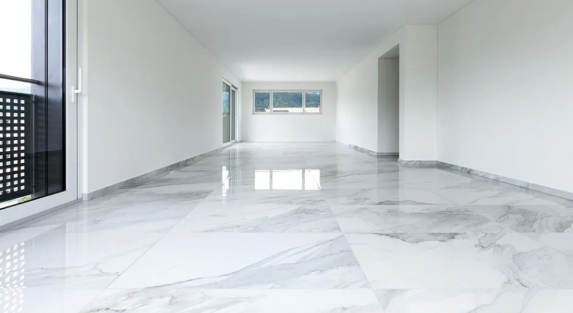
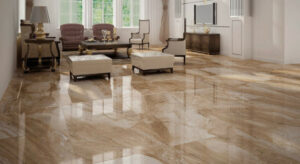
 .
.

